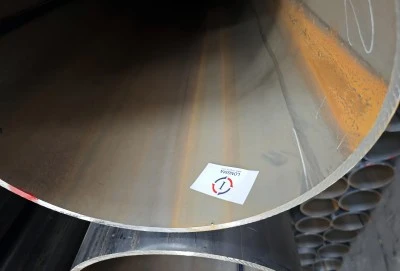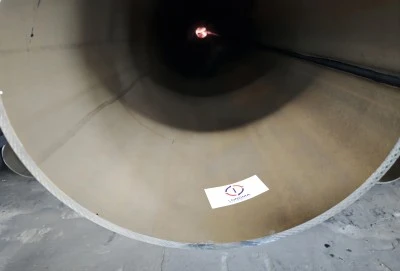Welding carbon steel pipe requires precision, skill, and the right tools. This process involves joining pipe sections using heat and filler material to create strong, durable connections. For pipeline engineers and project managers in oil and gas, water supply, and industrial manufacturing sectors, mastering carbon pipe welding is crucial.
|
|
|
Essential tools for carbon steel pipe welding
When it comes to welding carbon steel pipes, having the right equipment is paramount. Let's explore the must-have tools and materials that will set you up for success in your welding projects.
Top welding machines for carbon steel pipes
Selecting the appropriate welding machine is crucial for achieving high-quality welds on carbon steel pipes. For most applications, a TIG (Tungsten Inert Gas) welder is the go-to choice. TIG welding offers precise control and produces clean, strong welds ideal for pipelines in critical industries. Look for machines with adjustable amperage settings and pulse capabilities to handle various pipe thicknesses. Some top-rated TIG welders include the Miller Dynasty 280 DX and the Lincoln Electric Precision TIG 225, both known for their reliability and versatility in pipe welding applications.
Choosing the right filler metals and electrodes
The choice of filler metals and electrodes can make or break your carbon steel pipe weld. For most carbon pipes, ER70S-2 or ER70S-6 filler rods are excellent choices. These rods offer good weldability and produce strong, ductile welds. When it comes to electrodes, 2% thoriated tungsten electrodes (red tip) are popular for DC welding of carbon steel pipes due to their excellent arc stability and long life. Always match the filler metal's composition to the base metal for optimal results.
Safety equipment: PPE for steel pipe welding
Safety should never be an afterthought in welding operations. Essential Personal Protective Equipment (PPE) for carbon steel pipe welding includes a high-quality auto-darkening welding helmet, flame-resistant clothing, leather gloves, and steel-toed boots. Don't forget proper respiratory protection, especially when working in confined spaces or with galvanized pipes. Adequate ventilation or a fume extractor is also crucial to protect against harmful welding fumes.
Step-by-step guide: Preparing pipes for welding
Proper preparation is the foundation of a successful weld. This section will guide you through the essential steps to ensure your carbon steel pipes are ready for welding, maximizing the strength and integrity of your connections.
Cleaning and degreasing carbon steel pipes
Before welding, it's crucial to thoroughly clean the pipe surfaces. Use a wire brush or angle grinder to remove any rust, scale, or debris from the weld area. Follow this with a solvent cleaner to remove oils and grease. Acetone or a dedicated welding cleaner works well for this purpose. Clean at least 2 inches on either side of the weld area to prevent contamination. Remember, a clean surface is key to achieving a strong, defect-free weld.
Proper pipe alignment and fit-up techniques
Accurate alignment is critical for creating strong, reliable pipe joints. Use pipe clamps or a welding positioner to hold the pipes in perfect alignment. Ensure the root gap (the space between the pipe ends) is consistent all around the joint. A typical root gap for carbon steel pipes ranges from 1/16 to 3/32 inch, depending on pipe thickness. Use a feeler gauge to check the gap consistency. Tack welds can help maintain alignment during the welding process, but be sure to incorporate them into your final weld.
Preheating carbon steel pipes: Why and how
Preheating carbon steel pipes before welding can prevent cracking and improve weld quality, especially for thicker pipes or in cold environments. Use an oxy-acetylene torch or induction heater to preheat the pipe to about 200-300°F (93-149°C). Monitor the temperature with a temperature-indicating crayon or infrared thermometer. Preheating helps reduce the cooling rate of the weld, minimizing internal stresses and the risk of hydrogen-induced cracking.
Mastering TIG welding techniques for steel pipes
TIG welding is the preferred method for high-quality carbon steel pipe welds in critical applications. This section will delve into the specific techniques and settings that will help you achieve superior results in your pipe welding projects.
TIG welding settings for carbon steel pipes
Optimal TIG welding settings for carbon steel pipes depend on the pipe thickness and welding position. For a 1/8 inch thick pipe, start with about 70-90 amps for the root pass. Increase the amperage for subsequent passes. Use DC electrode negative (DCEN) polarity for carbon steel. Set your argon gas flow rate between 15-20 cubic feet per hour (CFH). Adjust these settings as needed based on your specific pipe characteristics and welding conditions.
Root pass welding: Tips for strong pipe joints
The root pass is the foundation of your pipe weld. Use a smaller diameter filler rod (typically 1/16 inch) for better control. Maintain a consistent arc length and travel speed. The "keyhole" technique can be effective: create a small molten pool, then slightly lift the torch to create a keyhole. Move forward steadily, ensuring the keyhole is filled behind you. This technique helps achieve full penetration. Remember, a properly executed root pass is crucial for the overall strength and quality of the weld.
Multi-pass welding for thick-walled carbon steel pipes
For thick-walled pipes, multiple passes are necessary to fill the joint completely. After the root pass, perform hot passes to build up the weld. Increase your amperage slightly for these passes. Use a weaving technique to ensure proper fusion with the pipe walls. Clean each pass thoroughly before starting the next one to prevent inclusions. The final cap pass should be slightly convex and blend smoothly with the pipe surface. Multiple passes distribute heat more evenly, reducing distortion in thick-walled pipes.
Mastering the art of welding carbon steel pipes is essential for professionals in industries ranging from oil and gas to water supply systems. By following these guidelines on tool selection, proper preparation, and advanced TIG welding techniques, you can achieve high-quality, durable welds that meet stringent industry standards. Remember, consistent practice and attention to detail are key to perfecting your welding skills. As you apply these techniques in your projects, you'll contribute to the safety and longevity of critical infrastructure around the world.
Carbon Steel Pipes For Sale
Hebei Longma Group is your trusted partner for high-quality carbon pipes. Our state-of-the-art production facilities, imported from Germany, ensure superior product quality. With a professional team of over 300 employees, including 60+ technical experts, we deliver unparalleled expertise in pipe manufacturing. Our comprehensive testing facilities, including ultrasonic flaw detectors and X-ray equipment, guarantee product integrity. We offer fast delivery, with standard thickness pipes ready in just 7 days. Our products come with complete certifications, including API 5L and ISO 9001. Thanks to our efficient production model and strong supplier relationships, we offer competitive pricing without compromising on quality. For all your carbon steel pipe needs, contact us at info@longma-group.com.














